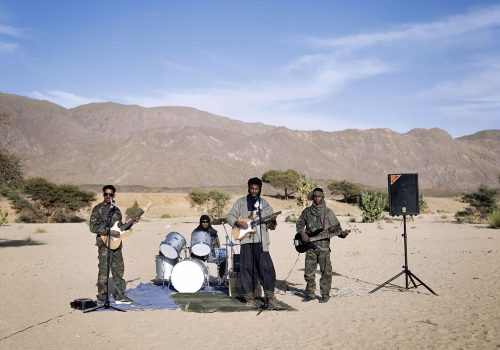“No sound bites, no photo opportunities
and it takes years.
All the cameras have gone
to other wars”
The book recently published by Dewi Lewis on the occasion of the 10-year anniversary of the Aftermath Project, a non-profit organization committed to telling the other half of the story of conflicts, opens on an excerpt of this poem by Wislawa Szymborska, who was the recipient of the 1996 Nobel Prize in Literature. An initiative by photographer Sara Terry, the Aftermath Project started after she realized that “every story of war includes a chapter that almost always goes untold – the story of the aftermath, which day by day becomes the prologue of the future”, she writes in introduction.
Convinced that this part of the narrative was missing in the media landscape, she went to Bosnia in the early 2000’s to document the long rebuilding of a country on its way to peace. “It’s about history, future, about our humanity, things we forget about, things we should remember, things that should be understood so we don’t repeat them again. It’s a much more complex and nuanced subject than conflict, which is pretty damned clear. Quite often disputes are rooted in the aftermath of an older dispute – postwar is all about conflict prevention”, she explains. In parallel to her personal work, she launched the Aftermath Project, that developed over the years from a grant giving program to an educational one. “It’s important to reach schools and to develop critical thinking about conflict and the consequences of conflict. One of the main focus in the coming years will be for us to develop that aspect”, she insists.
For now, the retrospective book, named War is only half the story after her observation attests to the inclusion of the aftermath in today storytelling. “I can look at the past ten years and see that the aftermath conversation exists now. In post 9/11 America, everything was about conflict. When I said to people that I was working on aftermath, they were asking, What do you mean? I don’t understand. And the media tended to cover aftermath issue with a simplistic chronologic hook such as ‘10 years after’…”, she summarizes. And 10 years after the Aftermath Project started, there is a wide coverage of such stories, served by a multiplicity of languages.
The book ranges from documentary to conceptual practices. There are for instance Andrew Lichtenstein’s multi-layered landscapes, featuring historical sites across America and revealing the disturbing connection between memory and conflict. “An image that I think is startling and rich of layers is that of the three women sitting on a bench by Andrew Lichtenstein”, Terry exemplifies. Shot in Montgomery, Alabama, the image depicts three women resting on a bench on the day of the 150th anniversary of the inauguration of the President of the Confederacy, Jefferson Davis.
This is the same bench where Rosa Parks waited to board the city bus she was arrested on in 1955, which helped launch the Civil Rights movement. “The celebration of the Confederacy [i.e. secessionist slave-holding states] was happening right on the spot of the most important place for civil right movements. It speaks volumes about the complexity of a photograph”, Terry continues. Sequenced in 5 chapters echoing poems by Szymborska, the book evolves towards brighter narrative, introduced by the following words: “This terrifying world is not devoid of charms of the mornings that make waking up worthwhile”, and “Reality demands that we also mention this: life goes on”.
“Aftermath is where we want to start defining our humanity. War tries to destroy our humanity, and the aftermath is the time when we claim our humanity again. I think those two last chapters in the book explore that. It’s something that always surprised me in Bosnia. There were Muslims who had been raped, sent away from their home and yet wanted to go back. I wanted to understand what made them want to return. That’s a powerful part of the human spirit”, Terry exclaims.
Yet, this crescendo towards joy is not deprived of subtlety and the last chapter includes for instance a photograph of the Ku Klux Klan by Christopher Capozziello. The caption reads, “They laugh because to them it is a joke, but I look at his eyes and his hands clenching the stick. He beats the doll, looking to his parents for approval and finds faces that are smiling at what he has done”, and works as a warning for the future. “I don’t think that a photograph changes the world and should have that burden. If a photo does its job well it reminds us what it is to be human. It makes us exchange about our humanity, even when showing inhumanity”, Terry says. “Photographs can change our perception of the world as they remind us of who we want or don’t want to be.”
Laurence Cornet
Laurence Cornet is a journalist specializing in photography and an independent curator. She lives in New York and Paris.
War is only hald the story – Ten years of the Aftermath Project
Edited by Sara Terry and Teun Van der Heidjen
Published by Dewi Lewis
$45.00 US
See also:
http://www.saraterry.com/
http://theaftermathproject.org/
















